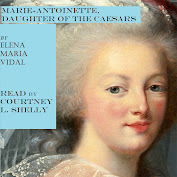Arthur Conan Doyle’s Adventures of Sherlock Holmes are an enduring part of our cultural lexicon. In the cases Holmes and his trusted friend, Dr. Watson, pursued, Doyle brilliantly weaved mystery with subtle commentary exposing the uneasy interactions between the various classes of British society. Although Doyle’s stories have been adapted for the screen many times, Sidney Lanfield’s 1939 film, The Hound of the Baskervilles, is considered one of the finest and it is a perfect sort of spooky film for an October viewing. Basil Rathbone’s portrayal of Sherlock Holmes captures the essence of Doyle’s most famous character who, in this instance is approached to solve a dark and prowling mystery surrounding Baskerville Hall.
Baskerville Hall, we learn, has been plagued by a terrible curse. As the story opens, Sir Hugo Baskerville is discovered to be the latest victim of a vicious hound lurking in the moor that attacks unsuspecting strangers and regular inhabitants of Devonshire. A legend surrounding Baskerville and the hound adds another layer of strangeness and fear to this gothic tale. Apparently, there is an age-old curse on the Baskervilles whereby some kind of demon-dog sets upon members of the family.There is an air of the supernatural attached to the story, but of course the rationalist Holmes dismisses such explanations. For his logical and deductive mind, this analysis is not only impossible; it’s also quite useless.
The family doctor warns the family’s last heir, the young Sir Henry Baskerville, not to return to the estate. Holmes decides to help the young master and encourages him to disregard the advice, vowing to solve the mystery once and for all.
The arrival of the detectives Holmes and Watson to Baskerville Hall, however, is marked by one strange event after another. The housekeeper and his wife behave toward the Hall and the estate in an odd, possessive manner. Their gaunt appearance enhances the oddity of their behavior, and they are naturally on the list of suspects in the murder of Sir Hugo Baskerville.
Although Holmes does not question the existence of a hound, he correctly suspects that someone is deceiving Sir Henry in order either to drive him away from his rightful inheritance or simply trying to murder him. The mood of the film has all the classic elements of horror and gothic storytelling.The London fog settles over the scene just as a mysterious stranger attempts to kill Sir Henry; later, the foreboding landscape of the moors of Devonshire figure prominently in both the mood and the action of the story.
Although filmed in studio, every decision made by the set designers stays faithful to Doyle’s vision of the story and holds up for viewing today. The lifeless trees, the night, the perpetual fog, and Baskerville Hall itself, all create a gripping sense of atmospheric horror. Other 19th century gothic worlds come to mind, such as those created by the Brontë sisters, with Mr. Rochester’s “mad woman in the attic” or Heathcliff roaming Wuthering Heights. Here, too, the foreboding house and the moor are characters in and of themselves. But in many ways, this is also a typical Hollywood production—one that aims to bring the “charm” of Victorian England to a primarily American audience, but with a gothic twist. It is a familiar routine now, but it was novel in 1939.
As usual, Holmes plays harmless tricks on his friend and sidekick, Dr. Watson, here by appearing in Devonshire in disguise. Often, Holmes’ disguises involve taking on the personae of people in the lower classes, those who go unrecognized and unnoted by wealthy aristocrats like Watson. Holmes brings out the snobbery of the elites and shines a spotlight on the growing rift in British society. Yet, of course, Holmes himself enjoys the high life, which paradoxically allows him to speak for those less fortunate.
This is not to say that Holmes is in any way charitable. In fact, most of the time, he appears almost without compassion, self-involved, and especially looking down upon those of lesser intellect. But his much-needed if overbearing analytical skills allow him to solve one mystery after another, bringing closure and even happiness to those who have been afflicted by the darkness that always lurks in the foggy streets of London.
Although Rathbone is considered by many to be the quintessential Holmes (my own heart tends to embrace Jeremy Brett’s brilliant portrayal), he had misgivings about playing the famous detective. Rathbone was classically trained as a stage actor, and he brought that training to the role of Holmes. Unfortunately for Rathbone, however, the role managed to give him a bit of anxiety.
In his 1956 autobiography, In and Out of Character, Rathbone wrote that he was “jealous of his [Sherlock Holmes’] mastery in all things, both material and mystical … [Holmes] was sort of a god in his own way, seated on some Anglo-Saxon Olympus of his own design and making! Yes, there was no question about it, Holmes had given me an acute inferiority complex!” (Read more.)
The Perpetual Virginity of Mary
1 week ago


















No comments:
Post a Comment